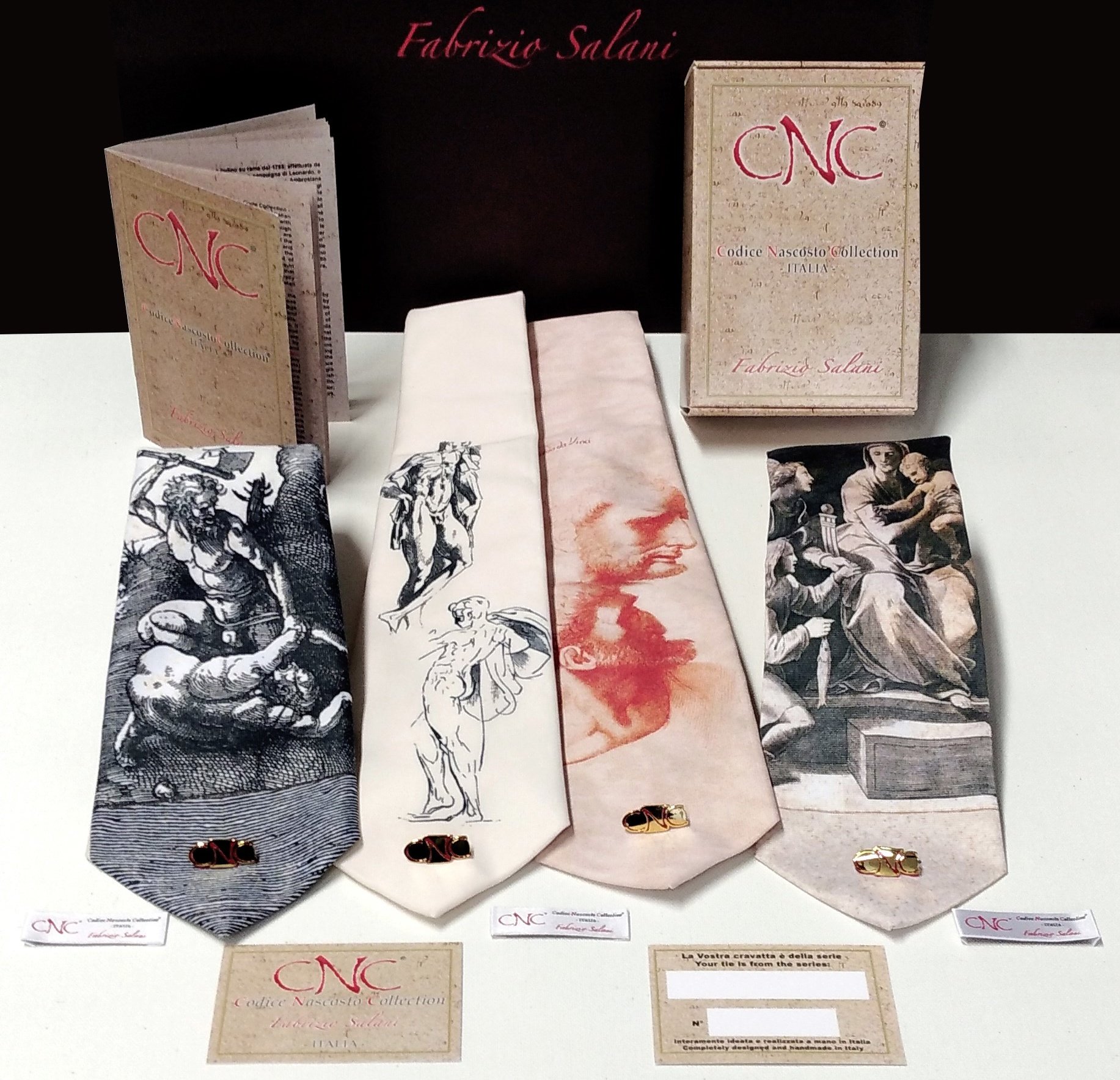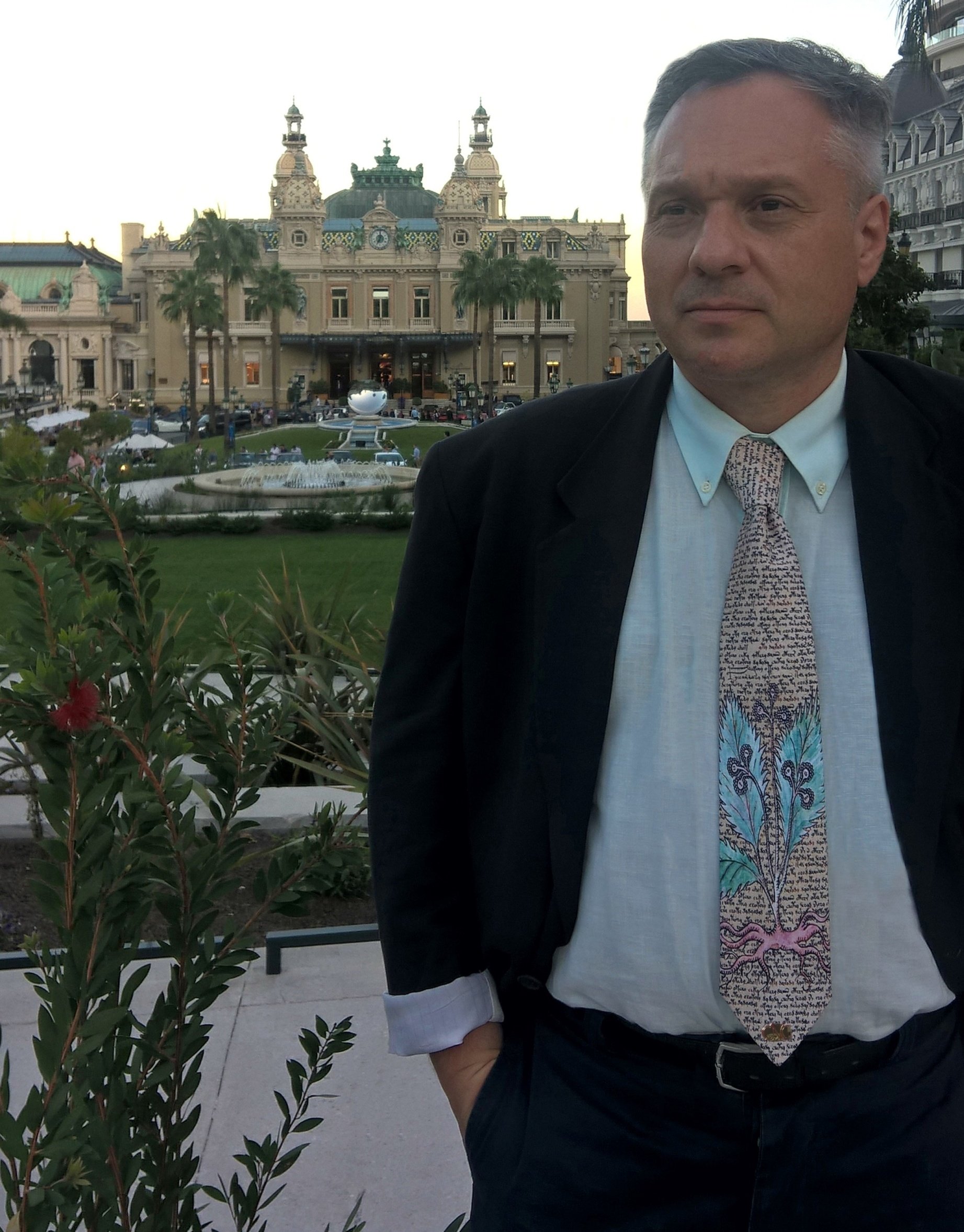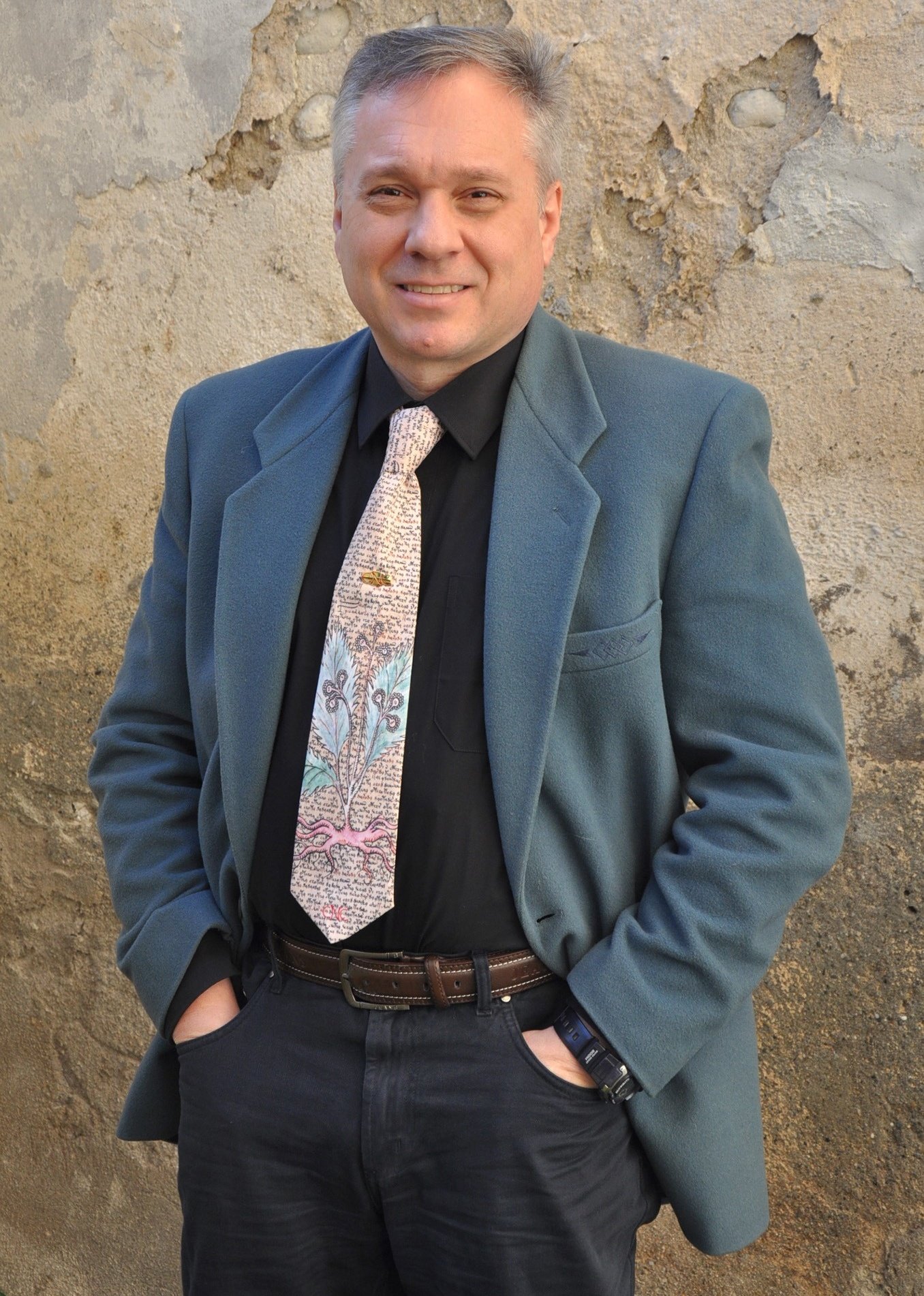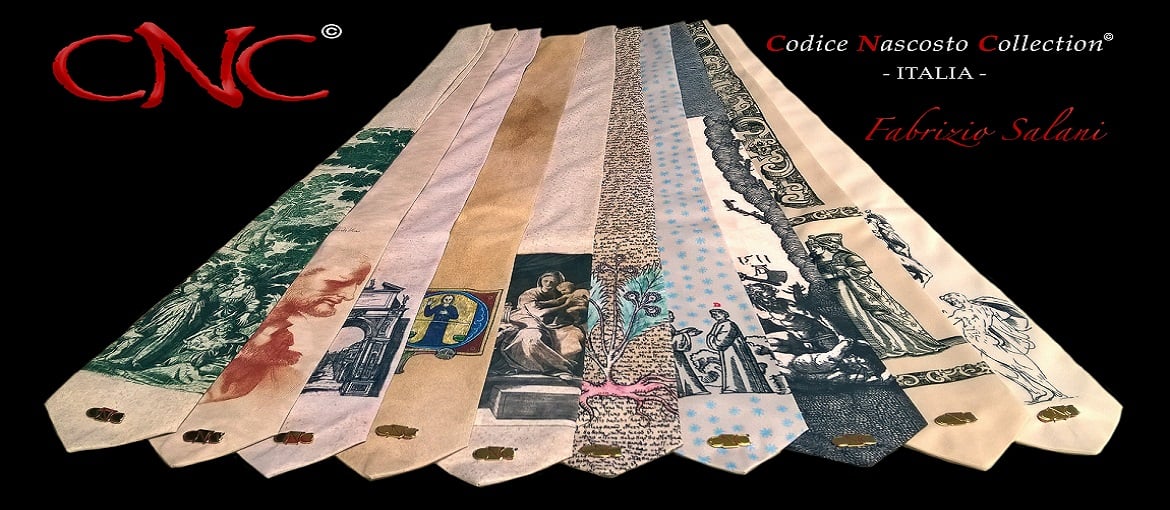Table of Contents
“Any part of life is sad, cheerless, dull, insipid, and tiresome unless you season it with pleasure, that is, with the spice of folly.”
Erasmus of Rotterdam, In Praise of Folly
What would the world be like without a touch of folly?
An ordinary, conventional, tired and boring world.
And how much progress would mankind have made without a willingness to take risks, to experiment, to follow a hunch or a dream?
Not much, probably.
Fabrizio Salani has made seeking the unknown his trademark: not just as a hunter of ancient books steeped in myth and legend, but also as an entrepreneur bringing a unique and whimsical twist to a menswear classic.
Fabrizio’s twin passions, ancient manuscripts and ties, collide in his collection of 10 unique pieces that re-imagine a men’s wardrobe classic with a touch of folly.
Positive, creative, industrious folly.
An endeavour that is brave and entrepreneurial, but, above all, refined and designed down to the finest detail. A project put together step by step, guided by a clear idea, which came to fruition with the support of Pixartprinting.
Today, we bring you a truly unique print story, one that you’ll want to read all in one go.
An adventure that reminds us that creativity has no limits, except those we impose on ourselves, and that, without a daring inspiration, the world would be a less gratifying place to explore and live in.
Enjoy!

Who are you? Tell us about yourself: your dreams, aspirations and talents. A short but faithful portrait!
Let me introduce myself: my name is Fabrizio Salani, I’ve been happily married for 25 years to my wife Daniela, and I’m a proud father of Mattia, our 12-year-old son. On 1 March 1989, I started working in our family shop (opened by my father in Biella, in 1967), which, over the years, has become the city’s go-to for digital printing, copying, print-on-demand and other services for offices, graphic designers, textile firms, and many other professionals in the area. In March 2018, I opened a second shop in Loano, Liguria. I have two hobbies: tracking down mysterious old manuscripts, and ties. The first of these two passions brought me international fame when I found the last page of the only original copy of the Voynich manuscript, the most world’s most mysterious book; it’s a legend which, at the talks I’m asked to give all over Italy, I like to describe as the “Mona Lisa” of books. In these 16 years as a “treasure hunter” (as the media have called me), I’ve found the so-called “Salani sheet”, the oldest known printed work from the Verona region, Raphael’s “Madonna with the Fish” parchment and many other masterpieces with an air of mystery.
Before telling us about your idea, can you explain to our readers what you made with our support?
Thanks to your extremely professional support, I was able to combine my two passions by creating 10 classic ties – as well as two slim styles – that feature ancient and mysterious works discovered over the years in antiquarian markets in Italy, Europe and further afield. The stories that accompany the images are all completely authentic and historically noteworthy (but only to experts) and now they will be available to anyone who wants to stand out and give themselves an air of mystery and culture. The style is simultaneously modern, classic and out of the ordinary, unique and instantly recognisable, but never boring or commonplace, making them perfect for any occasion. Your expertise, which I’ve been relying on for years now, has allowed me to create not just the fabric for the ties thanks to your 720 DPI colour sublimation printing on 235 gsm polyester, but also the illustrative booklet in A5 format with staple binding, the certificate of guarantee and the business card that accompanies the tie in its packaging.

Let’s start from the beginning. Where did the idea behind this project come from? Is there a particular story behind it?
I got the idea when I read an article from a few years ago that said the tie was obsolete, finished, stuffy, no longer wanted because it was considered outdated. I couldn’t accept this because the tie is the item that we first notice in a suit, it’s always been the calling card of a man with class. A jacket and tie showing small, dull white buttons, without a tie, smacks of a man who is scruffy, with little attention to detail. I wondered why this centuries-old accessory was no long “in fashion” (just in Italy, because in the rest of the world sales are constantly growing) and I found the answer in the style of tie, which has never been updated, which is too ordinary: either geometric or plain coloured, or featuring kitsch abstract patterns that are boring and stale. So, I decided to put a “story” on the tie that would make this item of clothing more than just an end in itself, but give it an air of culture and mystery too. My thinking was to engage, through culture and mystery, people asking about the images on the ties. It’s an intriguing and stimulating alternative way of starting a conversation with friends, at the dinner table, in meetings, with your partner and in many other situations in life. Curiosity, which is inside us all, is piqued by the mystery that lies in images, creating a unique blend that’s enigmatic and culturally innovative. On my website, and on the illustrative leaflet that you printed for me, each tie is accompanied by an explanation of the history and mystery behindthe piece depicted.
Once you had found the right idea, you had to set a goal. What was your objective?
I don’t know if this can be considered the right idea, but it’s my idea and as they say: If a man isn’t willing to take some risk for his ideas, either his ideas are no good or he’s no good. If someone thinks that I’m doing all this to try and make a quick buck, they’re much mistaken. I’m 54 years old and I’m well aware that “everything now” is just a youthful utopia based on the easy success of a few people that you can count on the fingers of one hand, compared to the thousands who fail. Hard work, perseverance, experience, success and failure (essential for personal growth), that’s the life that I’ve always led and I don’t intend on changing. The end goal is the personal pride in having achieved a dream.

How did you turn your project into reality?What were the design phases and how many were there? Tell us about the process that brought your idea to life and made it ready for printing.
Initially, using the machines in my shops, I scanned my ancient artefacts in high definition, then I used a computer to crop the details I wanted to print on the ties so that they fitted the arrow shape and knot, without distorting the original images. The result, after (lots) of trial and error, was 10 definitive styles. The second phase was to test the fabrics that were most suited to my idea, and yours were the best. I then concentrated on the brand name and style to ensure it was as attractive as possible while retaining an air of mystery. I designed the metal brooch, the illustrative leaflet, all the texts, the certificate of guarantee, the business card, the packaging box for the ties and the website. I searched for and tried various tailors to make the ties, and goldsmiths for the branded brooch, until I found the right people: the tailor in the Biella area and the goldsmith in Florence. At the beginning of February, I produced the first 100 examples on request.
How did you use print on demand to produce your design? Which materials did you choose and why?
Working in Biella in close contact with some of the most famous textile companies in the world, I was able to test my images on various fabrics, from silk to cotton, from acrylic to polyester, and the print quality obtained on your material was superior to all of those that I tried. My idea being more oriented towards the content than the “container”, I need the images to be as faithful as possible to the original. Printing on silk didn’t offer me this quality. What’s more, it’s difficult, as I found out, to manually create a tailored tie with an image that can’t have distortions, not even the slightest, because each tie is fully basted, sewn, folded, ironed and hand finished by the tailor! Printing on cotton is too crude with a hot stamped image, like a patch (completely unfeasible), and acrylic is too rough and stiff. However, your polyester has a subtle silky effect, and is not as shiny as silk itself, which is unsuitable for images of pieces that were originally created on paper or parchment. I love (as do many others I showed it to) using a modern material like your print-quality polyester 720 DPI colour sublimation printing, on which printing pieces that are between 200 and 500 years old, and sometimes more, is absolutely unique. There’s an inherent mystery to their history as they can’t be reproduced by anyone else, without violating the copyrights of their owner, namely me. Bear in mind that all the ties are signed and numbered by me by hand, like works of art, and finished with a metal brooch made from galvanised gold and red enamel (created by Mauro, a Florentine goldsmith) with my brand’s initials.

Now we get to the finished products! In your case, a line of undeniably original ties. How did it feel to finally hold them in your own hands?
When an idea becomes reality, especially if it’s a labour of love, it’s something exciting, electrifying. It’s a great satisfaction: now I know that I’ve done it! When you hold the end product in your hands, which you’ve invested so much in, not just in terms of money but also study, research and development to find the best material, the best craftsmen (any tailor can sew and hem, but how many can create a tie from a single strip of fabric?). You then need to package the product, because a work of art needs the right frame to showcase it. A tie needs packaging that shows it off as well as that extra something, hence the idea of adding a brooch, a detail that sets it apart from the average tie. Finding the best craftsman to make the logo brooch exactly how I’d designed it, from gold galvanised metal, ruby enamel and with a double butterfly fastening, this too took time. The actual finished product, that’s the payoff for all the effort, all the hard work, even if you know it’s only the start of the adventure. It’s pure adrenalin!
This is only the start! What other projects do you have planned for the future? Can you share them with us?
For me, just getting this far is a success. If this idea is a hit with the public, I’ll continue with an expansion of the line, by designing and producing T-shirts, polo shirts and jackets, with my idea of fabric, low relief, coloured weaves and hot-stamped textures, to bring out the best of the ancient and mysterious items that I’ve found so far. When it comes to promoting the brand, I’ve started to set up permanent sites, display cases with ties in high-end businesses that are nationally and internationally renowned for their excellence, like the Pasticceria Canterino in Biella, which won the “Best breakfast in Italy” award from the prestigious “Gambero Rosso” food guide; other displays will be created in the lobbies of famous hotels and casinos. In the immediate future, I’ve been asked to organise an exhibition of the ancient artefacts in my possession, displaying each tie beside the item that inspired it. To top things off, there will be explanatory panels and videos about the different design and production processes, from prototype to finished product. Let the show begin – I’m ready.


